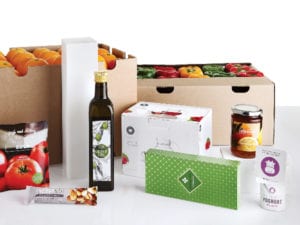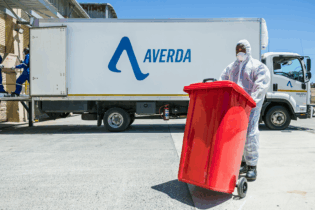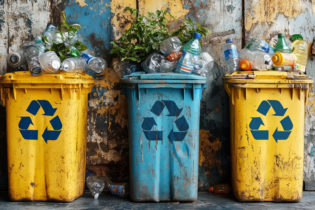Who should take responsibility for the life cycle of a product, especially its recovery, recycling and eventual disposal? With South Africa’s extended producer responsibility (EPR) regulations coming into effect from 5 November 2020, we now need to strengthen and extend our approach to recovery and recycling.
For many years, recovery and recycling have been voluntary and largely driven by industry, with a number of producer responsibility organisations (PROs) delivering strategic recovery initiatives, school recycling programmes and waste entrepreneur training. Even without mandatory conditions, South Africa’s paper recovery rate has averaged around 70% for the past three years, well above the global average of 59.3%. The packaging industry has been in consultation with the Department of Environment, Forestry and Fisheries (DEFF) for several years, initially under Section 28 of the National Environmental Management: Waste Act (No. 59 of 2008) and more recently under Section 18. The latter is better for business because it does not involve a tax and oversight by the Waste Management Bureau. This is a clear step in the right direction. Mandatory EPR will change how producers, brand owners, retailers and importers do business. Producers of goods or packaging will have to take back their material after use and do something with it, whether it is cost-effective or not. This process will be managed and financed by the producers through the payment of an EPR fee, with PROs handling the collection and disbursement of fees, based on rand per tonne of product sold to the local market. Those products that are more difficult to collect or recycle will attract ahigher fee. Along with stronger collaboration across the value chain, a mindset shift will be needed not only for legislative compliance, but also for the benefit of the environments we rely on. Paper products identified in the regulations are:
- newspapers
- magazines
- office and graphic paper
- corrugated/kraft (cardboard boxes)
- liquid board packaging (beverage cartons, paper cups)
- backing paper from adhesive labels
- paper sacks.
new schemes.Since the beginning of 2019, the majority of paper and paper packaging manufacturers have been paying voluntary EPR fees to Fibre Circle. These are used to support recovery and recycling, waste reduction, extending beneficiation opportunities, innovation, skills development and job creation – and, with the regulations now in place, Fibre Circle is well placed to continue providing EPR support to its members. It has been a long journey to get to this point and there is a fair stretch of road ahead of us. Targets for recovery and recycling for each product have been set for the next five years, with yearly increases. The regulations also make the producer or group of producers responsible and liable for the development and implementation of an EPR plan and compliance against each product’s targets. Producers will be required to conduct life-cycle assessments within three years for each product, accounting for changes in design, composition or production process in order to reduce the consumption of natural resources as well as the toxicity and volume of waste generated. EPR will, in turn, promote design for recycling. Together, producers and the PRO must develop and submit the EPR plan to DEFF by no later than 5 June 2021, along with the proposed EPR fee, for ministerial approval. Existing producers and PROs must register with DEFF within six months of promulgation of the regulations, and newly established producers and PROs within three months of initiating operation. Producers will be required to report performance measured against the individual targets and to submit verified data and performance audit reports to DEFF on an annual basis. When designing an EPR scheme, various factors should be considered:
- volumes available for collection
- ease of recovery from the consumer or source – through existing infrastructure or municipal collaboration
- technology and cost required to collect and/or recycle it locally
- quality of the recyclable material (level of contamination and known consistency – i.e. fresh or recycled, or mixed)
- product composition, including additives for wet strength or burst strength, dyes and laminates such as silicone, polyethylene and aluminium
- availability or viability of end-use markets
- consumer awareness.
Office paper (made from fresh wood fibre) is a high-value commodity due to its fibre quality; however, it can be difficult to collect if businesses and homes do not separate at source.
Beverage cartons – both shelf-stable and refrigerated – are recyclable in South Africa. There are interesting beneficiation opportunities for the plastic and foil streams, which can be extruded or moulded into a range of plastic-like products. Coffee and cold drink cups are ‘mobile recyclables’, making them difficult to collect once in the hands, or rather out of the hands, of consumers. Fibre Circle is currently working on prototypes of cup collection bins that can be installed in what were high-traffic areas pre-Covid-19, such as malls or office blocks. Processing some paper products requires significantly more research and innovation, and the development of technology that enables the recovery of the fibres. For instance, backing paper and release liners are difficult to recycle due to the siliconised laminate, but potentially easy to collect due to concentrated, pre-consumer volumes at factories. Fibre Circle’s research arm has commissioned a study into the design of a plant that can recover fibres from label backing paper and sack bags that can be operated by an SME. Navigating new and used routes for recycling EPR will see an investment in collection infrastructure, not only providing consumers with more convenient recycling facilities, but also a concerted recovery effort at the pre-consumer or post-industrial phase. Intensive consumer awareness campaigns will also help to drive behaviour change. This journey will take unprecedented levels of collaboration, municipal buy-in and separation-at-source by consumers in their homes, at their workplaces and in their schools. To borrow from the words of Ralph Waldo Emerson, EPR will be about the journey, not the destination. And you cannot go it alone.Terms to get to grips with
“producer” any person or category of persons or a brand owner who is engaged in the commercial manufacture, conversion, refurbishment or import of new and/or used products as identified by the Minister by Notice in the Government Gazette in terms of Section 18(1) of the National Environmental Management: Waste Act (No. 59 of 2008) “extended producer responsibility” a producer’s responsibility for their product is extended to the post-consumer stage of a product’s life-cycle “producer responsibility organisation” a not-for-profit organisation established by producers or any person operating in any of the industrial sectors covered in the notices published in terms of the Act to support the implementation of their EPR scheme and may represent individual or collective producers “scheme” a system that puts EPR obligations into effect







